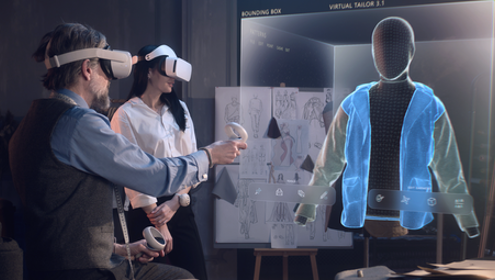
7 Reasons Customer Loyalty Programs Fail (And How to Fix Them)

Customer loyalty programs can be strong drivers of profit when done well. They drive repeat purchases, increase customer lifetime value, and turn buyers into brand ambassadors.
But the frustrating truth is, many loyalty programs fail to deliver the expected results.
Why? Because of hidden frictions lurking within them that alienate customers and choke ROI. Whether it’s overly complicated frameworks, irrelevant rewards, or outdated technology, these are easy to overlook but devastating in their impact.
Here’s a detailed look at the seven reasons your customer loyalty program isn’t working:
- Your rewards aren’t what customers want
- You make loyalty too complicated
- Your channels aren’t working together
- You’re forgetting the power of emotion
- Your technology is holding you back
- You aren’t tracking what really matters
- You are ignoring employee buy-in
Your Rewards Aren’t What Customers Want
The problem with many loyalty programs is simple – they offer rewards customers don’t actually care about. They’re no longer impressed by one-size-fits-all discounts or irrelevant perks. A 2021 study by McKinsey & Company found that 71% of consumers feel frustrated by impersonal experiences, and loyalty programs are no exception.
Take, for example, a fitness clothing brand that offers loyalty points redeemable on partner luxury goods like spa treatments. While well-intentioned, these rewards are entirely off-mark for their primarily fitness-focused audience.
The fix here is straightforward but requires commitment – lean into your customer data. Use purchase histories, survey responses, and engagement metrics to build rewards that feel tailored and relevant. Think early access to new workout gear, exclusive fitness classes, or discounts on health supplements.
If your program caters to a diverse customer base, segment the audience and design rewards that appeal to each group. For example, a retailer might create different tiers of rewards for casual buyers versus high-volume spenders, ensuring all participants feel valued and motivated to continue engaging.
You Make Loyalty Too Complicated
Simplicity is the unsung hero of a great loyalty program. Customers don’t want to decode convoluted point systems or memorize a 10-page long set of rules. It’s no wonder that 63% of consumers report abandoning loyalty programs due to difficulty understanding how they work.
Consider a classical airline loyalty program. They offer points for every mile traveled, but the conversion requires customers to spend hours doing math just to figure out how miles turn into an actual cent. Now contrast that to a simple “earn 10 euros cash back for every 100 spent” and you can imagine which program gets more traction.
The solution? Clear communication. Ensure your program has a clear structure with well-defined benefits. Keep earning and redeeming processes straightforward, avoid overloading customers with rules or thresholds, and ensure your loyalty system is easy to access. Make it simple enough that customers can see value at a glance.
Your Channels aren’t Working Together
Shopping today is rarely confined to one channel. Customers routinely browse products on their phones, look for reviews on social media, and then visit the store to try them out and make a purchase.
Loyalty programs that fail to connect these dots frustrate customers and dilute the value of the program. For example, a customer might earn rewards for offline purchases only to discover they can’t redeem them online. This scenario becomes even messier when email promotions or app notifications don’t sync with in-store offers, resulting in inconsistent and frustrating experiences.
The fix requires omnichannel integration. Modern loyalty software – like SAP Customer Loyalty Management – allows you to consolidate customer data across all platforms into a 360 customer view so users can seamlessly earn and redeem rewards regardless of where or how they shop. This unified approach creates a seamless experience, fostering trust and long-term loyalty.
You’re Forgetting the Power of Emotion
Points and discounts are all well and good, but they only scratch the surface of what a loyalty program can achieve. Emotional loyalty, on the other hand, creates something priceless – true connection.
Forrester’s CX Index data shows that when a company makes customers feel appreciated, 76% indicate they’ll keep their business with the brand, 80% say they will spend more with the brand, and 87% will recommend the brand to friends and family members.
Take our customer Douglas, a leading beauty retailer that leans into emotional loyalty by fostering a community of beauty enthusiasts. Through social media engagement, user-generated content, and exclusive loyalty perks, Douglas turns its customers into advocates who feel like they’re part of something bigger than just a transactional experience.
To build emotional loyalty, go beyond points and discounts. Create opportunities for customers to connect with your brand’s values, give them exclusive access to experiences, and recognize their contributions (like referrals or reviews). Building emotional resonance takes time but pays off immensely in retention and advocacy.
Your Technology is Holding You Back
Outdated loyalty platforms are one of the most significant barriers to program success. Poor tech stacks lead to data silos, preventing brands from delivering personalized experiences – a critical expectation in modern loyalty programs.
For example, an outdated system might only aggregate data from in-store purchases, overlooking valuable online activity. This gap results in fragmented data sets that weaken personalization efforts, making it harder to tailor offers to individual preferences or predict behavioral trends.
To tackle this, invest in a fully integrated, AI-powered loyalty platform. Such systems provide real-time insights into customer behavior, enabling more targeted campaigns and on-the-spot personalization. Additionally, centralized platforms eliminate data silos, providing a 360-degree customer view that’s essential for delivering impactful loyalty programs.
You aren’t Tracking What Really Matters
The ultimate goal of a loyalty program isn’t customer satisfaction – it’s measurable ROI. Yet, shockingly, only 42% of companies actively measure their program’s success. Without metrics like customer retention or average spend, brands are essentially flying blind.
Critical metrics include customer retention rates, lifetime value, Net Promoter Score (NPS), churn rate, and redemption rates. For instance, if redemption rates are low, it might indicate customers find the rewards unattractive or the redemption process too cumbersome.
Ensure your program is data-driven from day one. Make sure you have the right platform in place (our article on CDP, DMP, and CRM platforms might help there), regularly analyze your KPIs, conduct A/B tests for different loyalty tactics, and adapt your strategies based on what’s working. By committing to continuous monitoring, you’ll know exactly where your program excels—and where it needs adjustment.
You are Ignoring Employee Buy-In
No loyalty program can succeed without the buy-in of those on the frontline – your employees. They’re the ones who explain the program to customers, ensure its smooth execution, and troubleshoot issues. If employees don’t understand or value the program, neither will your customers.
Consider a retail store where cashiers have little to no training on the loyalty program. When a customer asks about redeeming points, the cashier fumbles through an explanation, leaving the customer frustrated and confused. On the flip side, an enthusiastic employee who’s well-versed in the program can generate excitement and foster trust.
Invest in training programs that empower employees with a deep understanding of the loyalty program’s mechanics and benefits. Offer incentives for employees to promote the program, such as bonuses for sign-ups or contests to reward outstanding contributions. When employees actively champion the program, customers feel the excitement and trust its value.
Final Thoughts on Why Loyalty Programs Fail
A well-designed loyalty program is more than just a points system. It’s a strategic asset that enhances customer relationships and drives sustainable growth. By addressing hidden frictions like irrelevant rewards, outdated technology, and inconsistent omnichannel experiences, you can create a program that not only meets but exceeds customer expectations.
Take the time to evaluate your loyalty program against the points above. Are your rewards aligned with customer expectations? Is a confusing structure turning people away? By overcoming these challenges, your loyalty program can become a powerful driver of customer satisfaction and engagement.
Ready to transform your loyalty program into a profit driver? Connect with NETCONOMY today for a personalized consultation.
GET IN TOUCH WITH US!
Authors and Contributors

Sophie Oppacher | Digital Strategy Consultant








